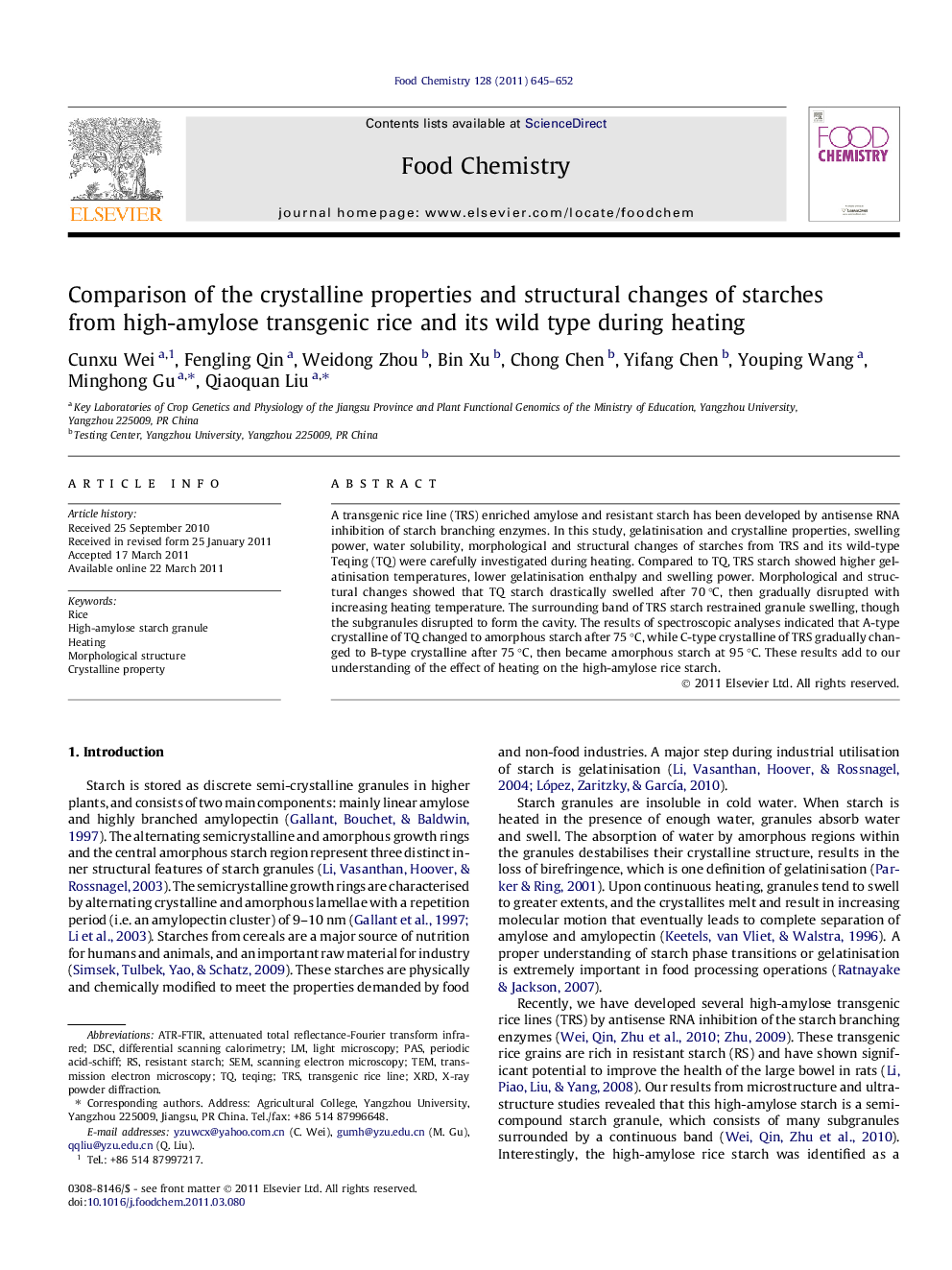| Article ID | Journal | Published Year | Pages | File Type |
|---|---|---|---|---|
| 1187023 | Food Chemistry | 2011 | 8 Pages |
A transgenic rice line (TRS) enriched amylose and resistant starch has been developed by antisense RNA inhibition of starch branching enzymes. In this study, gelatinisation and crystalline properties, swelling power, water solubility, morphological and structural changes of starches from TRS and its wild-type Teqing (TQ) were carefully investigated during heating. Compared to TQ, TRS starch showed higher gelatinisation temperatures, lower gelatinisation enthalpy and swelling power. Morphological and structural changes showed that TQ starch drastically swelled after 70 °C, then gradually disrupted with increasing heating temperature. The surrounding band of TRS starch restrained granule swelling, though the subgranules disrupted to form the cavity. The results of spectroscopic analyses indicated that A-type crystalline of TQ changed to amorphous starch after 75 °C, while C-type crystalline of TRS gradually changed to B-type crystalline after 75 °C, then became amorphous starch at 95 °C. These results add to our understanding of the effect of heating on the high-amylose rice starch.
► TRS starch shows higher temperature, lower enthalpy of gelatinisation compared to TQ. ► TRS starch shows lower swelling power and higher solubility at high temperature. ► TQ starch swells and gradually disrupts, and becomes amorphous starch after 75 °C. ► The outer band of TRS starch restrains starch swell and maintains its native shape. ► C-type crystal of TRS gradually changes to B-type, then becomes amorphous starch.
